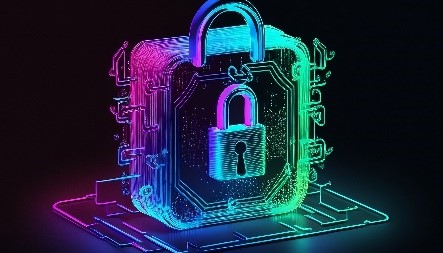The Crucial Role of Tackling Insider Threats to Your Cybersecurity

-Michael Fowler
In today’s interconnected digital reality, the battle to secure sensitive data and maintain the integrity of computer systems has never been more critical. But while the security spotlight often shines outward toward external hackers and malicious software, there’s another, much closer peril deserving your keen attention: Insider Threats.
Case Study
In 2018, a disgruntled Tesla employee used false usernames to change a vital element of the company’s manufacturing operating code. He also exported gigabytes of sensitive data, including trade secrets, to unknown third parties.
His motive for the attack? Revenge. He had expected a promotion, did not receive it, and decided to use his insider privileges to damage and sabotage the company.
Following the sabotage and data leak, Tesla’s share prices fell by five percent, and a production ramp-up was significantly delayed. (Source: RiskOptics)
The Nature of Insider Threats
An insider threat is usually a trusted individual or privileged user—an employee, vendor, contractor, associate, or business partner—authorized admission into an organization’s IT assets and information. Because of their access and familiarity with an organization’s systems, these users have the potential to exploit vulnerabilities, compromise cybersecurity, and cause significant damage with relative ease.
Insider threats come in various forms, each possessing its own potential to rupture an organization’s information security fabric. They can arise from employees who are dissatisfied and intentionally acting out, as well as from uninformed individuals who are unintentionally careless.
In terms of maintaining a robust cybersecurity posture, the importance of identifying these insider threats and thwarting the damage they can cause cannot be overstated.
The following are the three most common categories of insider threat:
- Malicious Insiders: These are individuals who misuse their internal privileges with malicious intent. Their motives can range from personal gain to revenge, and their actions can result in severe consequences, such as the data breaches and system sabotage that Tesla suffered.
- Negligent Insiders: These insiders may not harbor any ill intentions, but their actions can compromise cybersecurity nevertheless. From falling prey to phishing attacks to unwittingly sharing sensitive information, their slip-ups can pave the way for unauthorized access to sensitive information.
- Compromised Insiders: In these cases, external actors manipulate an insider’s credentials to gain unauthorized entry into the organization’s IT infrastructure. This possibility underscores the importance of monitoring employee behavior and scrutinizing unusual network activities that might indicate a compromised insider.
The Power of Early Identification
The first line of defense in thwarting insider threats is identifying them as early as possible. Detecting insider threats involves closely observing employee behavior, tracking network activity, and recognizing patterns that could indicate an impending breach. Early identification is crucial for several reasons:
- Swift Intervention: By spotting suspicious activity promptly, organizations can intervene and mitigate potential threats before they escalate into full-blown crises. Detecting anomalies in data access, unusual log-in patterns, or uncommon data transfers can help flag potential insider threats.
- Tailored Risk Management: Identifying insider threats early on enables organizations to assess the severity of the situation and allocate resources accordingly. The organization can then take targeted, appropriate security measures as appropriate.
- Escalation Prevention at an Early Stage: Organizations can often eliminate the motivations for malicious actions by addressing the root causes of insider threats. Tackling employee dissatisfaction, enhancing training, and shoring up system vulnerabilities can significantly lower the potential for hostile activity.

Strategies for Preventing Insider Threats
Effective prevention of insider threats requires a multifaceted approach combining technological solutions, well-established policies, and a pervasive culture of security awareness. Here are some preventive methods to consider:
1. Controlled Access and Privilege Management: Limiting access to sensitive data based on an individual’s roles and responsibilities helps minimize the risk of data misuse. Rigorous access controls and regular privilege reviews ensure that employees only have access to the information relevant to their tasks.
2. Security Training and Vigilance: Educating employees about cybersecurity and the perils of insider threats is essential. Regular training sessions enable employees to identify phishing attempts, comprehend secure password practices, and promptly report any suspicious activities.
3. Surveillance and Analytics: Utilize advanced monitoring tools that analyze both employee actions and network activities to reveal anomalies. These tools can generate alerts for potential insider threats and provide valuable insights leading to further investigation.
4. Incident Response Planning: A well-defined incident response plan streamlines the process of addressing suspected insider threats. The plan should delineate protocols for investigating incidents, managing risks, and transparently communicating with stakeholders.
5. Encouraging Open Reporting:
Cultivating an environment where employees feel comfortable reporting unusual activity without fear of reprisal can go a long way. Establish anonymous reporting channels, which encourage open dialogue and timely threat reporting.
6. Continuous Evaluation:
Regularly assessing and refining your organization’s security policies and procedures allows you to adapt to the evolving threat environment. Security audits and risk assessments will help identify potential vulnerabilities and areas needing improvement.
7. Fostering a Culture of Cybersecurity
An impregnable defense against insider threats hinges on fostering a culture steeped in security consciousness across the organization. Elements of an organizational culture of cybersecurity consciousness might include:
Effective prevention of insider threats requires a multifaceted approach combining technological solutions, well-established policies, and a pervasive culture of security awareness. Here are some preventive methods to consider:
1. Controlled Access and Privilege Management: Limiting access to sensitive data based on an individual’s roles and responsibilities helps minimize the risk of data misuse. Rigorous access controls and regular privilege reviews ensure that employees only have access to the information relevant to their tasks.
2. Security Training and Vigilance: Educating employees about cybersecurity and the perils of insider threats is essential. Regular training sessions enable employees to identify phishing attempts, comprehend secure password practices, and promptly report any suspicious activities.
3. Surveillance and Analytics: Utilize advanced monitoring tools that analyze both employee actions and network activities to reveal anomalies. These tools can generate alerts for potential insider threats and provide valuable insights leading to further investigation.
4. Incident Response Planning: A well-defined incident response plan streamlines the process of addressing suspected insider threats. The plan should delineate protocols for investigating incidents, managing risks, and transparently communicating with stakeholders.
5. Encouraging Open Reporting:
Cultivating an environment where employees feel comfortable reporting unusual activity without fear of reprisal can go a long way. Establish anonymous reporting channels, which encourage open dialogue and timely threat reporting.
6. Continuous Evaluation:
Regularly assessing and refining your organization’s security policies and procedures allows you to adapt to the evolving threat environment. Security audits and risk assessments will help identify potential vulnerabilities and areas needing improvement.
7. Fostering a Culture of Cybersecurity
An impregnable defense against insider threats hinges on fostering a culture steeped in security consciousness across the organization. Elements of an organizational culture of cybersecurity consciousness might include:
- Leading by Example;
- Consistent Communication;
- Incentives for Vigilance;
- Cross-Functional Collaboration; and
- Lifelong Learning.
In the cybersecurity arena, insider threats present a formidable challenge. But through a blend of proactive identification, robust prevention strategies, and a steadfast culture of security awareness, organizations can fortify their cybersecurity defenses against both internal and external adversaries. The mission to safeguard our digital domain begins within our own walls.
In the cybersecurity arena, insider threats present a formidable challenge. But through a blend of proactive identification, robust prevention strategies, and a steadfast culture of security awareness, organizations can fortify their cybersecurity defenses against both internal and external adversaries. The mission to safeguard our digital domain begins within our own walls.
